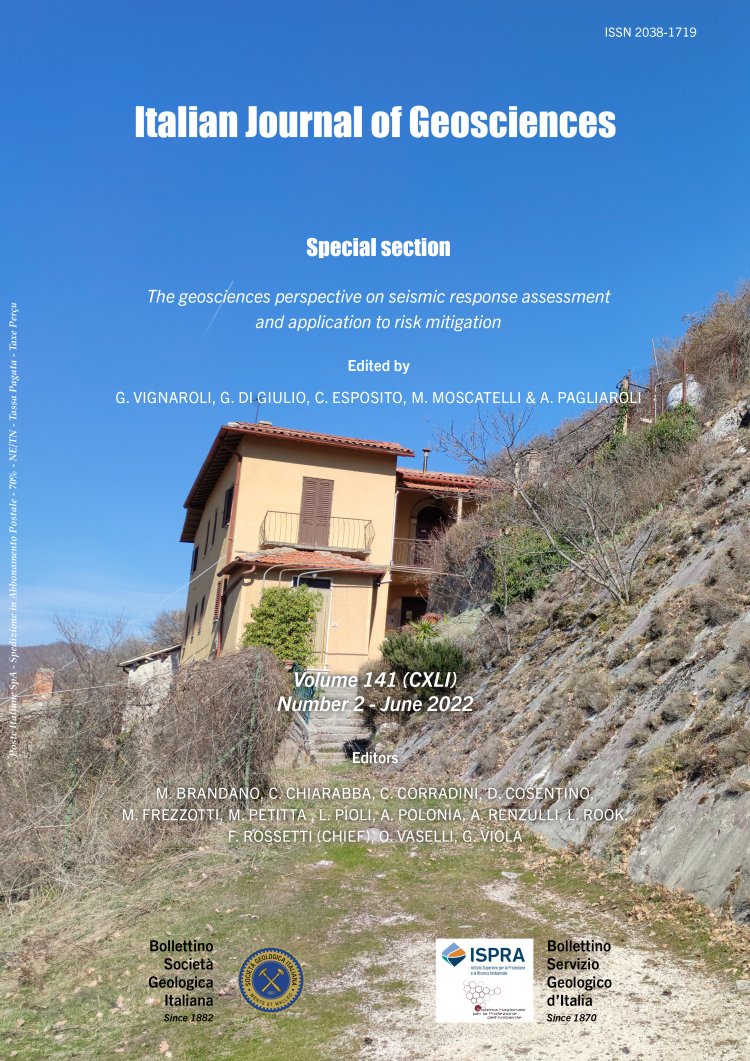
The Last Glaciation in Valchiavenna (Italian Alps): maximum ice elevation data and recessional glacial deposits and landforms
Davide Tantardini1, Stefania Stevenazzi1 & Tiziana Apuani1
1Università degli Studi di Milano, Dipartimento di Scienze della Terra “A. Desio”, Via L. Mangiagalli 34, 20133 Milano, MI, Italy.
Corresponding author e-mail: davide.tantardini@unimi.it
Volume: 141 (2022) f.2
Pages: 259-277
Abstract
This work presents the first extensive, 1:10,000-scale field survey data concerning glacial deposits and glacigenic landforms in the Valchiavenna territory, which has an area of 578 km2. Valchiavenna is an inner Alpine valley in Northern Italy between the Lepontine and Western Rhaetian Alps.
A comprehensive 1:25,000 map of deposits and landforms from the last glaciation to the present is provided, describing i) glacial trimline evidence and associated features, such as moraine ridges, erratic boulders, ice- moulded bedrock surfaces and kame terraces; ii) glacial, ice-contact, lacustrine/peat and gravity-reworked till deposits; iii) other supraglacial, marginoglacial and subglacial landforms; and iv) erratics in glacial deposits. Establishing an absolute chronology of glacier dynamics was not the objective of this work. However, a relative chronology was inferred from sedimentological and geomorphological evidence: this allowed the description of the general behaviour of glaciers in the area during and after the Last Glacial Maximum (LGM).
The palaeogeography at the LGM and the palaeo-ice-flow pattern were reconstructed on the basis of field data; this data confirmed that the valleys were almost completely filled by glacier ice, covering about 88% of the study area, with only the most elevated ridges and a few nunataks emerging above the ice surface, and allowed the identification of different source areas for the erratics found on opposite sides of the main valley.
The observation of stratigraphical and geomorphological relationships between glacial deposits and landforms made it possible to propose a relative chronology of glacial advances and to outline the general glacial dynamics of the area. Both at the LGM and during the deglaciation after the LGM, the valley glacier inserted offshoots in tributary valleys, thus generally blocking the advance of local glaciers. With the gradual melting of the valley glacier during the deglaciation after the LGM, tributary glaciers could deposit tills on areas previously covered by valley glacier ice and at lower altitudes than the older lateral moraines. The main outcome of this work is a rich and homogeneous database of glacial deposits and glacigenic landforms that will be useful for further local and regional studies. It can guide the planning of geochronological dating and represents a fundamental step in the identification of glacial stadials and ice mass modelling. It can also support biogeography studies and the evaluation of the effects of climate change, slope dynamics modelling and hazard prediction.
Keywords
Get Full Text Supplementary Material